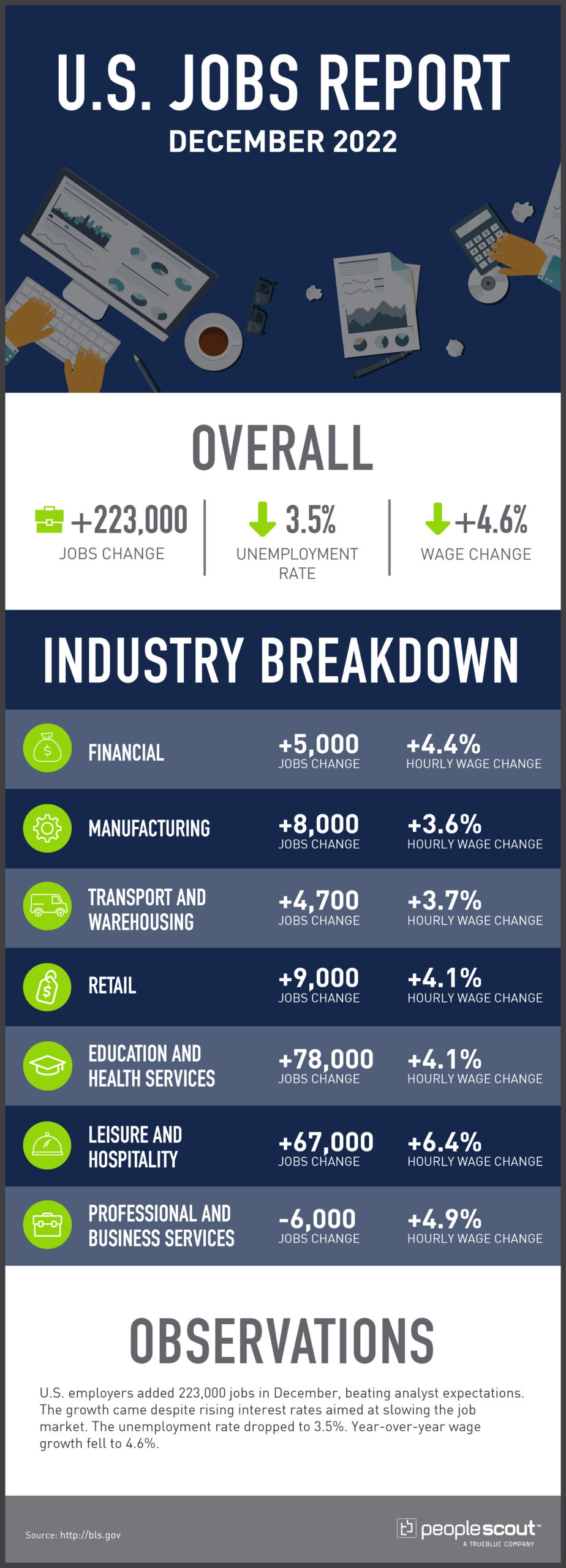It’s no secret that job vacancies continue to outnumber job seekers. But what many employers focused on volume hiring don’t realize is that they already have one of the most effective tools for out-recruiting their competition at their disposal: their employer brand.
Investing in your employer value proposition (EVP) and employer brand is one of the best ways an organization can differentiate and attract the volumes of candidates it needs without compromising on quality-of-hire. In this article, we share ways to make your employer brand work harder for your volume hiring needs.
Ebook
Learn 9 Strategies for Improving Volume Hiring
Employer Brand vs Consumer Brand
At PeopleScout, we define employer brand and EVP as follows:
- Employer brand: Your employer brand is the perception and lived experiences of what it’s like to work for your organization.
- Employer value proposition: Your employer value proposition, or EVP, captures the essence of your uniqueness as an employer and the “give and get” between you and your employees.
When an organization’s brand is well-known, there is frequently an overlap in sentiment between the consumer and employer brands in the minds of the general public. What candidates expect from you as consumers will be very different from what they’re looking for as potential employees.
Your employer brand should showcase the characteristics that make a company a great place to work, as well as the benefits, career growth opportunities, work-life balance and company culture that help you attract and retain talent.
Understand Your Audience & Tailor Your Content
The key to an effective employer brand is to know your audience. Zero in on who your ideal candidates are by looking at the most successful employees in each role. Are there similarities in their work experience, motivators or personalities? For example, we helped a telecoms client create candidate persona profiles for their contact center and found that many of their longest tenured employees were previously employed in beauty salons. These employees were applying their previous customer service experience to their phone and online customer interactions.
By shifting the mindset from getting candidates with previous call center experience to getting applications from candidates with past customer service experience in salons, restaurants and hotels, we were able to help the client increase offer acceptance and reduce attrition.
Similarly broadening your target audience will help you hire at scale in today’s tight market, and understanding who is most successful in a role—what makes them tick, what motivates them—will help you lean into the aspects of your employer brand that will be most meaningful to them. That could mean playing up your flexible work shifts, growth opportunities or your organizational values.
Create a Positive Candidate Experience
Even if you receive an influx of applicants for a role, don’t sacrifice the candidate experience. Word of mouth is still alive and well, and candidates have no problem sharing their experiences (especially negative ones) on social media.
Investing in CRM tools to introduce more personalization into your candidate communications can boost your candidate experience. Look for tools with texting and SMS capabilities to reach candidates where they already are. Texting is often more accessible for many hourly job seekers who are more likely to rely on their mobile devices for job searches and internet access.
Automating your screening and interview scheduling processes via text helps free up time for your recruiters and hiring managers to connect one-on-one with candidates and hold meaningful conversations that improve the candidate experience.
Your recruitment process should leave every applicant, regardless of whether they get a job with you, with a positive impression of your organization. Candidates are often your customers, and the last thing you want is for your candidate experience to negatively impact your consumer brand reputation. An exceptional candidate experience is essential not only in engaging the talent you need today, but in establishing a strong employer brand that will serve you well into the future.
Get Tips to Optimize High-Volume Recruitment
Want more tactics for high-volume recruitment? Check out our ebook, 9 Strategies for Solving High-Volume Hiring Challenges.




